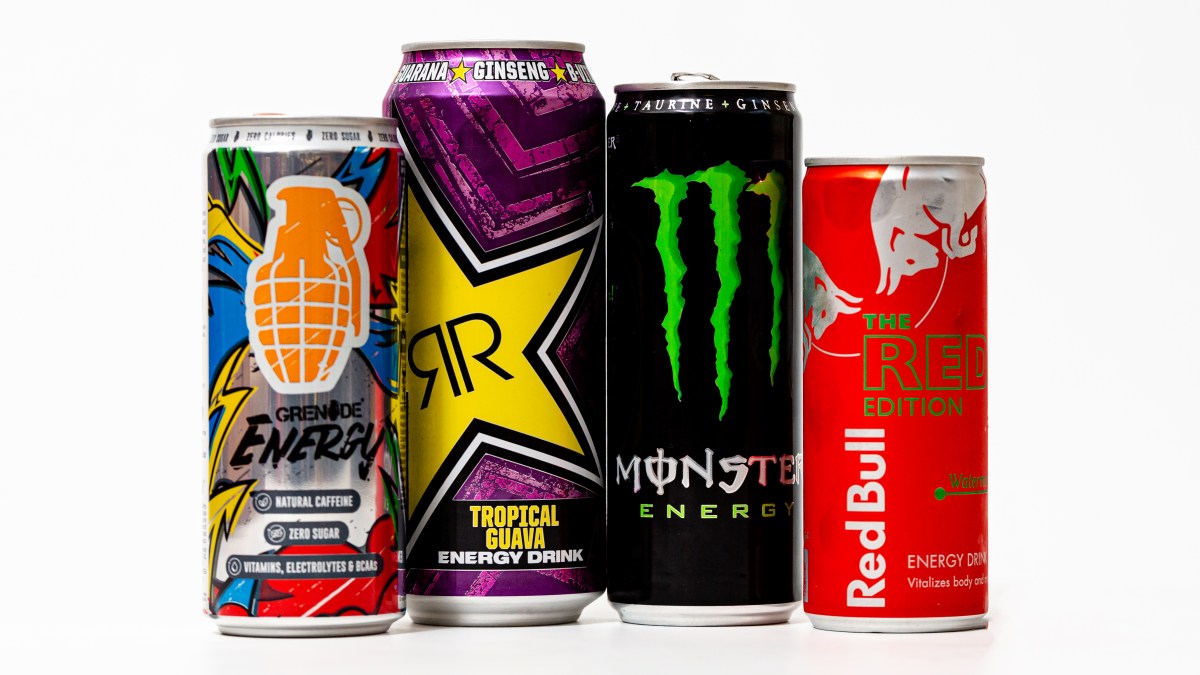If you have a teenager in your life, then you almost certainly know about the social capital of energy drinks such as Monster, Relentless, Red Bull, Rockstar and Prime. The government is now proposing a ban on the sale of these caffeine-packed drinks to under-16s, but how bad are they, really?
Energy drinks typically contain about 160mg of caffeine per 500ml can. Most of the drinks are also packed with sugar: up to 55g in a 500ml can, or 13 teaspoons.
“There’s no official safe limit for caffeine in children in the UK, but the European Food Safety Authority advises keeping it below 3mg per kg of body weight a day,” says the nutritionist Charlotte Faure Green. “That’s 90mg for a 30kg child — even one energy drink can go well over that. Most health bodies agree children should have very little caffeine, or none at all. ”
• How to know if your caffeine intake is healthy — and what to do about it
Almost every drink has a label saying it is “not recommended for children”, butaccording to gov.uk, up to a third of children aged 13 to 16 and nearly a quarter of those aged 11 to 12 consume one or more of these drinks every week.
Energy drinks can contribute to insomnia, tremors, obesity, tooth decay, heart problems, headaches and weak immune systems. “The combination of caffeine and sugar is especially tough on a child’s system,” Faure Green says. “Caffeine stimulates the stress hormones adrenaline and cortisol, while sugar triggers rapid rises and falls in blood glucose. That can leave a child feeling restless, irritable and unable to focus and, with time, that affects sleep, appetite and metabolic and dental health. These drinks train the body and brain to seek energy from caffeine and sugar rather than from proper food, rest and hydration, the opposite of what a growing body needs.”
• Revision food for students — what to feed your teens
Sarah Rappaport, campaign manager at the Jamie Oliver Group, which launched the #NotForChildren campaign against energy drinks in 2018, says her team hears from teachers who prepare back-up lesson plans to use depending on whether the children are “high” or “low” after consuming energy drinks. Most schoolshave banned them, but that doesn’t stop children having them before school or at lunch. Supermarkets including Tesco, Morrisons, Sainsbury’s and Waitrose restricted the sale of energy drinks to under-16s but they’re still available from small shops and vending machines.
In response to concerns, some brands have brought out “healthier” versions such as Monster Zero, which is sugar-free but still has 160mg of caffeine, and Prime Hydration — sugar and caffeine-free but packed with artificial sweeteners. But they are still far from ideal for children.
• From slushies with glycerol to bubble tea: The drinks children should avoid
“No parent can solve this alone,” says Katharine Jenner, executive director of the Obesity Health Alliance. “That’s why an age-of-sale policy is so important.” After this, Jenner says, “we need the government to get serious about curbing predatory junk food marketing and making healthy food the affordable, easy option”.

